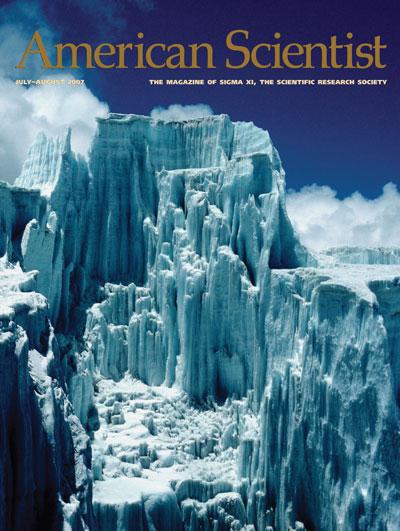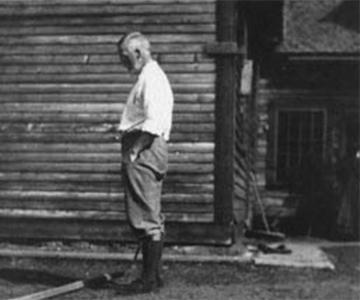Computing Science


Perched high above the plains of the East African tropics are the towering ice cliffs that cap Kilimanjaro, Africa's highest peak. The ice cap's area has shrunk almost 90 percent over the past century, a fact sometimes cited as an example of how global warming is affecting glaciers. In "The Shrinking Glaciers of Kilimanjaro: Can Global Warming Be Blamed?," Philip W. Mote and Georg Kaser note that warming can generally be blamed for shrinking glaciers in the middle and high latitudes. But evidence implicates different processes—solar radiation and sublimation (the conversion of ice to water vapor)—in the retreat of the Kilimanjaro's ice. The evidence is written in the sharp features of the cliffs, seen here in a photograph taken about 1980: Icicles, for example, are formed when ice begins melting under the effect of solar radiation and immediately refreezes in the continuing cold temperatures at the summit. (Photograph by John Reader/Photo Researchers, Inc.)
The linked sensations of temperature and pain come from a family of membrane proteins that can tell neurons to fire when heated or hot-peppered
The spacecraft's journey in orbit around this ringed world has provided startling discoveries and unprecedented views of Saturn's atmosphere, rings and moons, with more surprises doubtless still to come
Had scientists better appreciated one of Kelvin's contemporary critics, the theory of continental drift might have been accepted decades earlier

Putnam Camp: Sigmund Freud, James Jackson Putnam, and the Purpose of American Psychology, The Canon: A Whirligig Tour of the Beautiful Basics of Science, and A Measure of All Things: The Story of Man and Measurement
Click "American Scientist" to access home page